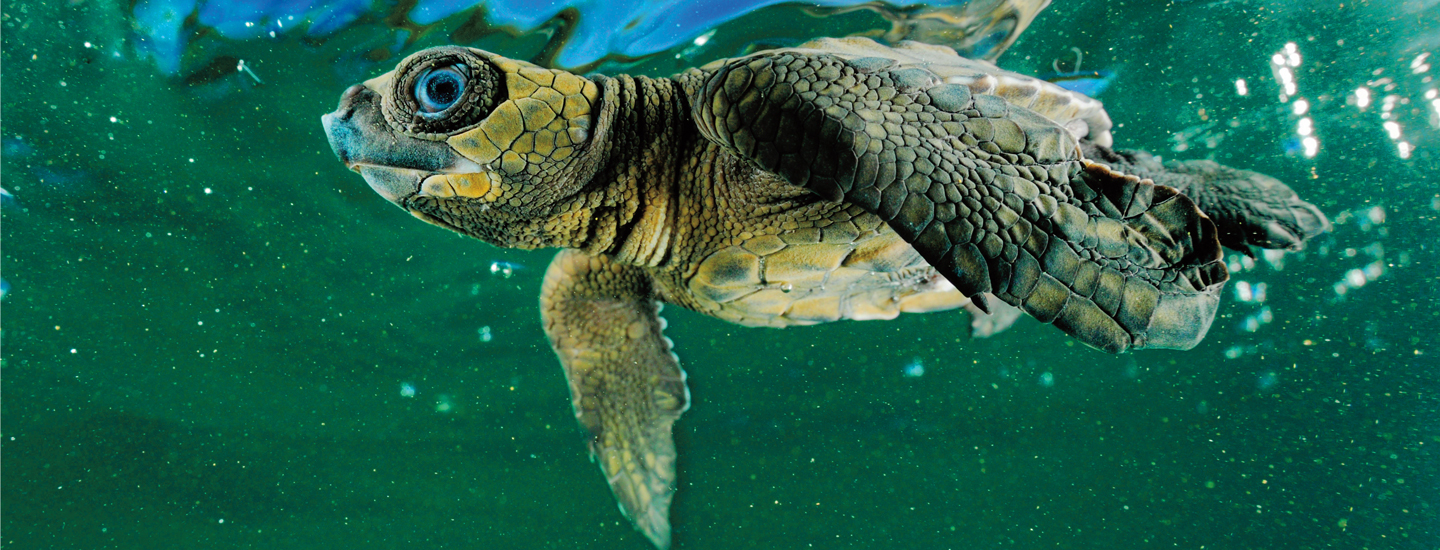Thousands of sea turtles emerge from the ocean in the middle of the night. They’ve come out of the water to lay eggs on a beach. A few days later, criminals sneak up to the nests to steal turtle eggs. But there’s something they don’t know. Hidden among the real eggs are fakes with GPS trackers inside. The decoys lead the authorities to the thieves’ hideout, where they’re arrested.

Trouble for Turtles
Criminals are stealing turtle eggs from beaches. Can scientists and Hollywood makeup artists stop them?
It may sound like a movie, but it’s not. With the help of a Hollywood makeup artist, scientists have created a device that looks and feels like a sea turtle egg. The decoy is called the InvestEGGator. Researchers hope it will help stop poachers from stealing turtle eggs.
Sea Turtles in Danger
Almost all sea turtle species are endangered, says Kim Williams-Guillén, an ecologist who helped design the InvestEGGator. She works at Paso Pacífico, an organization that protects sea turtles and other wildlife in Central America.
As few as 1 in 10,000 sea turtles survive to adulthood. They face many threats. After they hatch, turtles crawl to the ocean. Birds and other animals can catch them. If they make it to the ocean, sea creatures could eat them. Some die in fishing nets or from eating plastic trash.
People in some cultures eat sea turtle eggs. They are a delicacy, or special treat. People pay as much as $300 for an egg.
BEACH CRAWL:
Olive ridley turtles swim out of the ocean to lay their eggs in Mexico.
Making a Match
Williams-Guillén thought a fake egg with a tracking device could lead the authorities to the criminals. But first she needed to create a decoy that looked and felt like a real egg.
She started by making a mold from an actual turtle egg. Using the mold, she then made a prototype out of silicone.
To make the decoy look and feel more realistic, Williams-Guillén turned to Lauren Wilde. She’s a makeup artist who works in film and television in Los Angeles, California. “I thought the project was amazing and wanted to help out,” says Wilde.
First, Wilde sanded the eggs to make them smooth. Then she applied different coats of paint and glue to get just the right color. Once the fake eggs are in the nests and covered in sand, you can’t tell them apart from the real thing.
The finished product looks like a Ping-Pong ball with a small dent on its surface. Inside the InvestEGGator is an antenna, a battery, and electronics similar to those found in most cell phones. “These electronics connect to the internet and send the egg’s location,” says Williams-Guillén.
Last summer, researchers tested some fake eggs in olive ridley turtle nests in Costa Rica. The devices fooled poachers! This year, Williams-Guillén plans to test more. Once scientists expose poaching routes, they can work with law enforcement to protect turtle eggs.
